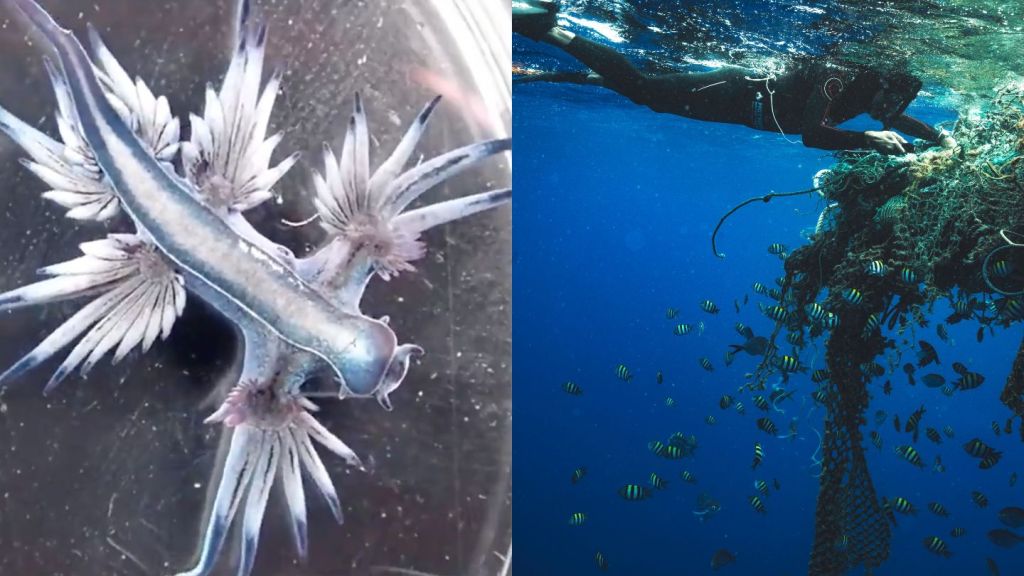In an episode of the original Cosmos, Carl Sagan ruminated on the complexity of whale songs in his inimitable Sagan-y way. “If I imagine that the songs of the humpback whale are sung in a tonal language then the number of bits of information in one song is the same as the information content of the Iliad or the Odyssey,” he said. “Is it just a romantic notion that the whales and their cousins, the dolphins might have something akin to epic poetry?”
Well sure, it’s a romantic notion, but that doesn’t mean it can’t be true. In fact, the more scientists scrutinize whale vocalizations, the more sophisticated these communication patterns are revealed to be.
Videos by VICE
Case in point: a study published today in Nature Communications confirms that sperm whales, like humans, develop local dialects that help bind their clans together. These dialects are manifested in differing patterns of clicks—or “codas,” as biologists call them—which whales use to solidify relationships within their own clan. It’s like a linguistic ID card, and it supports Sagan’s “romantic notion” that whales have evolved their own unique cultural experience.
The study was led by Dalhousie University PhD candidate Mauricio Cantor, who modeled 18 years of sperm whale interactions to investigate how and why these clan-specific accents develop.
“The clan membership arguably can promote social cohesion and cooperation,” Cantor told me over email. “We know, for instance, that female sperm whales tend to stay with some relatives and other unrelated individuals for many years.”
“While they perform those long and deep dives to catch food, other females nurse and care of the calves at the surface because they can’t dive for that long or deep,” he continued. “Within a social unit, similar acoustic communicative signals may be very useful to coordinate these and other cooperative behaviours.”
Two female sperm whale during a synchronous dive off the Galapagos Islands. Image: Mauricio Cantor/Whitehead Lab/Dalhousie University
In other words, much like most humans, sperm whales are more comfortable with companions that speak in their dialect. Interestingly enough, this phenomenon of clan-specific dialects is not unique to sperm whales. “There other cetacean species with different ‘dialects,’” Cantor told me. “Humpback whales, Orca whales, and bottlenose dolphins are the most studied species.”
“What seem to be different among sperm whales are the scale at which the ‘dialect’ variation occurs and the fact that it happens in the same place,” he continued. “For instance, in the Pacific Ocean, there are about five clans of sperm whales with distinct ‘dialects.’ These whales can virtually go anywhere in the entire Tropical Pacific […] and whales from different clans co-occur in the same waters at the same time. Yet, they seem to stick with their clans and perform the sounds characteristic of their own clan.”
Sperm whale range. Image: Kurzon/Wikimedia
The larger issue raised by these studies is how whales develop and cement their particular dialects in the first place. To that point, Cantor and his colleagues concluded that the main driver of language markers is likely social learning, rather than genetic inheritance.
This is important because it is a fairly similar model to how humans evolve regional dialects, suggesting that we may have more in common with our oceanic cousins than we realize. And that, in turn, may motivate humans to help bring threatened whales back from the brink of extinction.
“Finding evidence for culture in other animals not only helps us understand the foundations of our society, but realize how similar we are to these animals,” Cantor said. “We all tend to interact with those who are similar to us. Similarity breeds good relationships. So I hope we can improve our relationship with whales and the natural world before these and other fascinating creatures are gone.”
“Humans have always feared and worshipped, hunted and loved whales,” he concluded. “They are part of our culture. And like us, they have their own kind of culture.”



